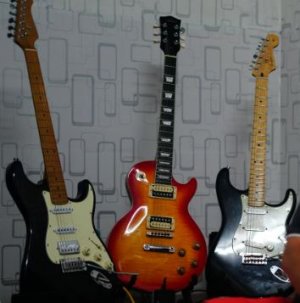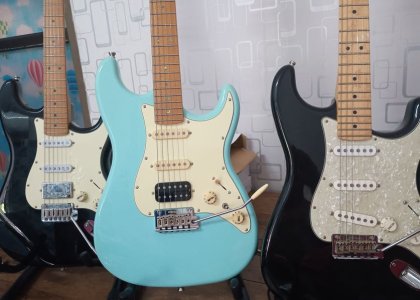Every piece of wood is unique. Therefore, every Strat will sound a little bit different. I currently have 4 alder Strats and 4 poplar Strats. I also have a few LP style guitars with mahogany bodies made of African sapele, and one of them even had a super heavy basswood body. Of the many guitars that I have owned and sold in music retail, Gibson's made of mahogany have the most tonal variance (not variety) and the biggest differences in weight from body to body. Basswood also has a huge variation in tone and weight. My LP copy made of basswood sounded better than most genuine LesPaul's that I sold in my day. It had great mid-range and sustain. Alder, however, is the most consistent tone wood I know with the least variation in tone and weight. It's a great all-rounder that just sounds good. Now where does poplar fit in? Apart from the green streaks, poplar is very similar to alder in weight and tone, and in fact, I often prefer the punchier attack of my poplar Strats to my genuine Strats made of alder. Alder is generally louder and smoother sounding with poplar being slightly quieter but punchier and brighter. In other words, of my alder and poplar strats that have the same hardware and pickups, the alder strat is smooth, creamy, lush stratty sounding. The poplar version is as if Blackmore rocked up with his 70's Strat which had a treble boost or something (think of early Rainbow live recordings). Poplar lacks mid-range (a bit) and some bass frequencies but accentuates the highs. It cuts through. It appears to have a wee bit less sustain - but that could be my old strings. My super strat combination is a roasted maple neck with stainless steel frets AND a roasted poplar body. But that's just my personal choice. Both alder and poplar are great tone wood choices with basswood and mahogany coming in at last. If you must have a mahogany kind of tone, go with Sapele. It's an African type of mahogany but with a tad more treble.






